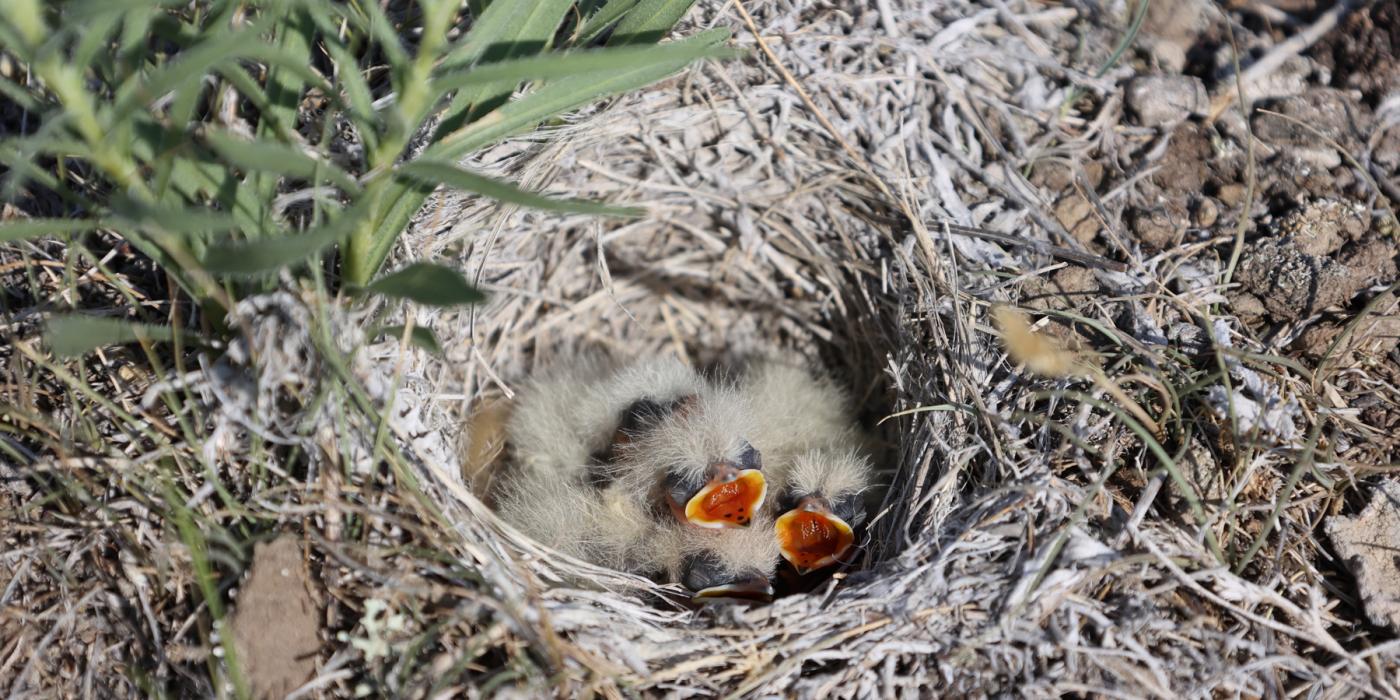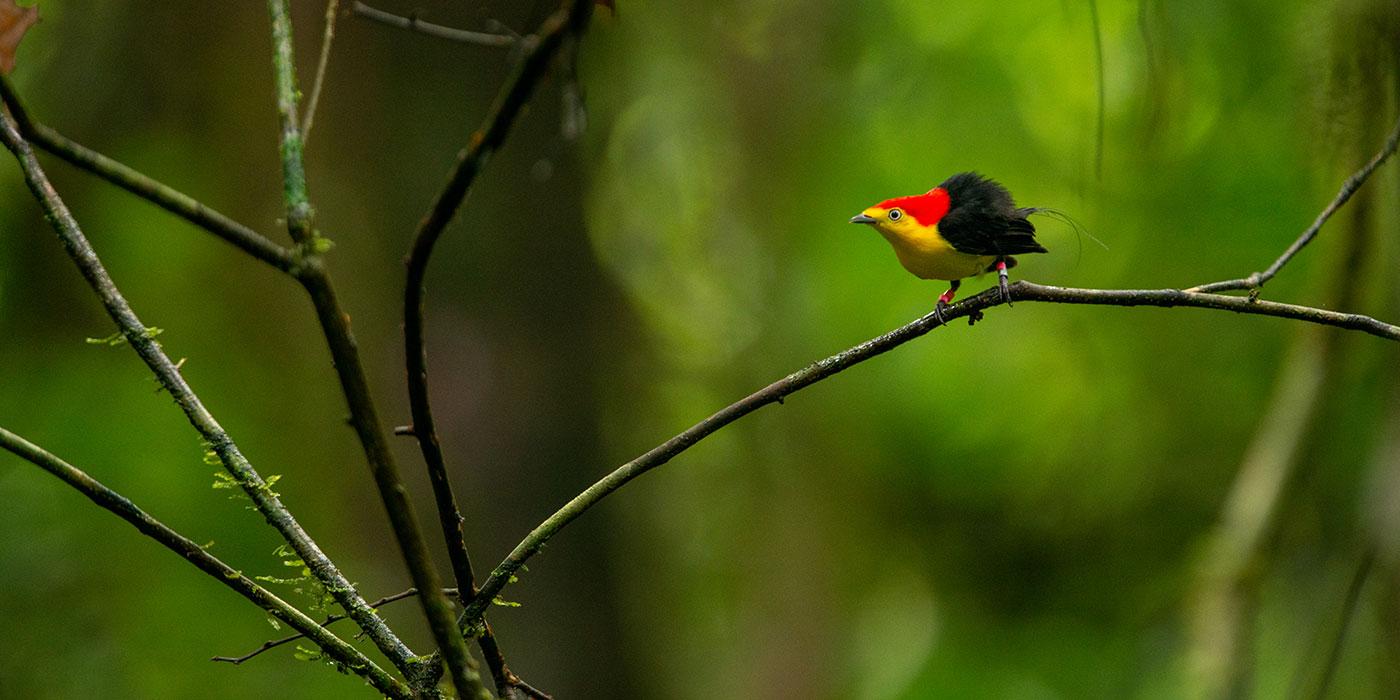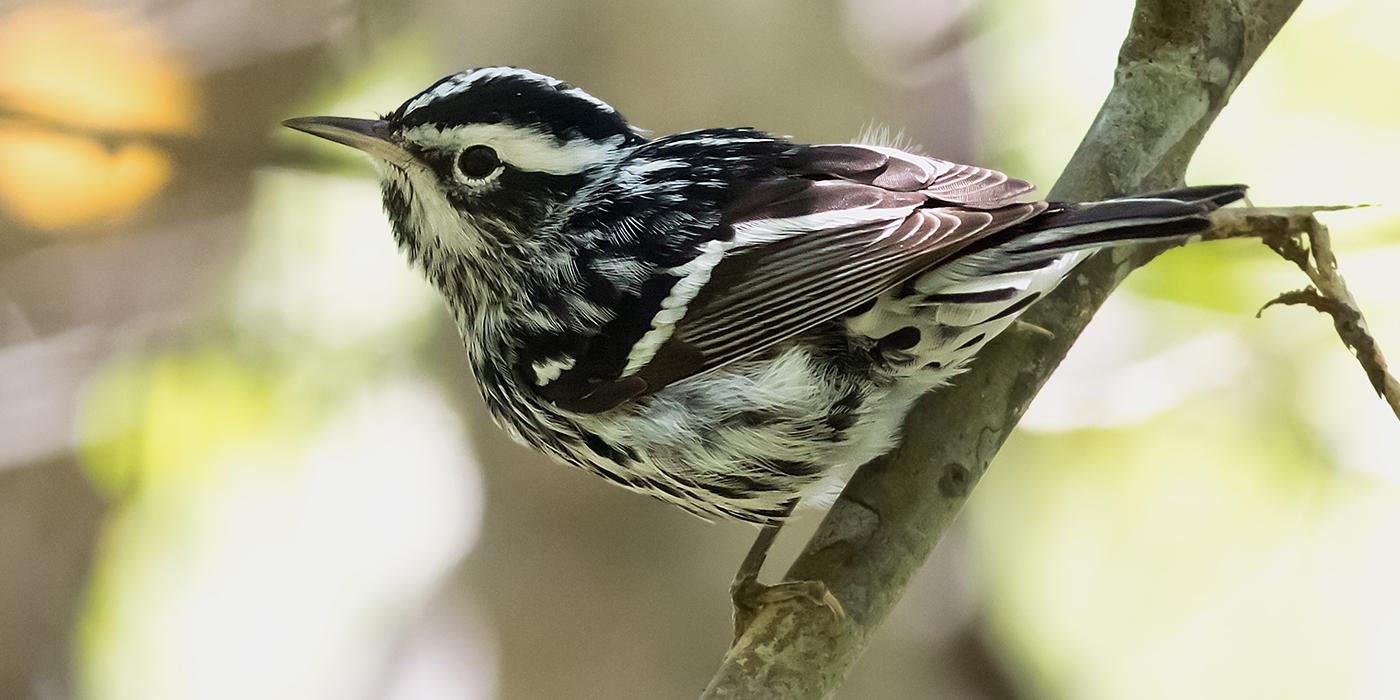Western Rivers: Magnets for Migrants

Wake-up Call
Imagine. It is dark and you have been traveling at an altitude of 5,000 feet for eight hours over arid desert, crossing the Mexican border at midnight. You have been flying on your own two wings, fueled by body fat and guided by the celestial map of the constellations. The sun begins to rise, and the dry, treeless expanse appears below. A serpentine river slithers through the flat valley, shedding off green fields of alfalfa and cotton.
You are hungry and tired from your journey that began in Central America. As you descend, you notice that the trees and bushes are no longer there. You continue on your flight, hoping that before you run out of fuel, you can find some trees to land on. Unfortunately, this scenario is real to more and more birds with each passing year.
Oasis-the Only Trees Around
Throughout much of the western United States, riparian (river edge) forests are oases that offer the only trees to the landscape. And it is in these trees where more than half of all bird species in a region must find food, build nests and raise their young.
In arid regions, birds disappear when the riparian trees that they depend on are destroyed. Despite their overwhelming importance to birds, these forests have been degraded, bulldozed, or chopped down at an alarming rate. In the Central Valley of California, it is estimated that only 5% of the original riparian forest exists, and that many of these remnants are degraded by human activities.
By 1986, along the lower Colorado River, only 25% of the riparian vegetation remained and what was left was mostly the exotic, shrubby salt cedar that replaced native plants. Less than one percent of the remaining habitat was mature cottonwood or willow-the most important habitat for many riparian birds. Because of their proximity to water-a contested resource, riparian habitats are the most heavily impacted in the West.
Take Me to the River
Bird communities along rivers in the western United States have been well studied. Bird densities are much higher than in other habitats, including upland forests. What makes riparian forests so attractive to birds? With the wealth of nest sites, shelter, food and water, they are frequently the best and, in arid regions, the sole providers of many birds' basic needs.
The lush forests are chock-full of a variety of insects that birds depend on for food. Also in abundance are tree frogs, mice and other animals that are prey for larger birds. In one study, Yellow-billed Cuckoos were found to raise more young if they were able to add tree frogs into their diet of insects.
Another study found that along the lower Colorado River, birds were able to feed on cicadas, an easily captured prey that annually reach to tremendous population levels only in the riparian vegetation.
In yet another study, it was found that the exotic Russian Olive trees along the Rio Grande in New Mexico provide fruit in fall and winter to large numbers of American Robins and other birds.
Many species need trees for nest sites. In arid regions riparian forests contain the only suitable trees around. Herons, hawks, jays, big enough to build cavity nests, which are reused by many other birds such as: Elf Owls, Lucy's Warblers, trogons, swallows, some flycatchers, nuthatches, chickadees, titmice and wrens.
All birds need water for drinking and bathing, and riparian vegetation provides many with shelter from predators while they fulfill these needs. Aside from shelter, a healthy riparian habitat contains small pools from past floods and small oxbow lakes. These conditions are what many birds prefer over swiftly-moving, open streams and rivers.
Shaking in their Roots
Decisions to alter riparian habitats are often made for short-term economic goals without regard for the long-term value of these forests for flood control, maintaining high numbers of birds that eat agricultural insect pests, recreation, and protecting high biodiversity.
The main culprits are farmland conversion, dam building, cattle grazing, pollution from mining, stream channelization, and housing development. The flat, alluvial floodplains along many large rivers are ideally suited to agriculture, especially with flood control and water releases from the ubiquitous dams. Unfortunately, these floodplains were also ideally suited for the historically-vast riparian forests.
A look at the history of settlement in the West shows that agriculture and cattle won out over the riparian vegetation. During the 20th century, exploitation of water grew to the extent that nearly all rivers and major steams in the West were damned.
This greatly accelerated the development of agriculture, and also destroyed vast amounts of forest quickly by drowning and slowly, by preventing the regeneration of the fertility of soils produced by annual floods. Other effects of dams that are detrimental to riparian vegetation include; increased salinity of the released water and downstream soil, lowered water table downstream, and destructive flooding from prolonged water releases.
Mooove Along Little Dogie
Cattle grazing remains the single most destructive force that can be practically and significantly reduced. Many studies have shown that cattle systematically destroy shrubs and foliage under 5 feet tall. These same shrubs are critical for providing feeding and nesting areas for birds. Also, by adding to the structural diversity of the vegetation, this shrubby layer increases the area's overall biodiversity potential.
In overgrazed areas, the destruction of the shrubby layer can eliminate several species. Many of these riparian birds such as the Willow Flycatcher and Bell's Vireo are highly threatened throughout much of their ranges. Experiments have shown that many riparian birds will increase their populations two to 50 times within six years after cattle are fenced out.
If grazing continues for decades, as it has in many areas, large trees fail to reproduce because cows eat the saplings. This, in turn, leads to the eventual loss of large shade trees when these trees die and are not replaced by younger trees.
Because this process is slow and often exceeds the average human lifespan, it is difficult to notice the gradual reduction of riparian forest. Yet studies have documented, with interviews and historical photographs, that forests in many areas have been completely lost.
In addition, cows trample the banks of streams, widening the channel and eventually deepening the channel bottom. This lowers the water table and kills the shallow-rooted, native trees.
Elimination of grazing in riparian habitats can vastly improve their regeneration, reduce the channel width and depth, increase stream flow, and greatly increase the abundance and species of birds. Simply changing bad grazing practices also helps.
Letting proper numbers of cattle graze riparian vegetation only after the growing season, using artificial watering ponds and fencing cows out of riparian areas for extended periods of time can increase not only the vitality of the riparian forests, but the health and productivity of cattle as well.
A Vicious Cycle
In some desert areas, trailer parks spring up under the cool shade of cottonwood trees. The inhabitants soon chop down these trees because the "cotton" from the seed pods get caught in the air conditioners in the trailers. Idle trailers, no longer in the shade, become overheated and their occupants more dependent on air conditioners.
Non-native trees are then planted to provide shade. This results in a great loss of biodiversity as these trees, such as eucalyptus and non-fruiting mulberry, generally lack insect prey and are useless for birds. In some cases tamarisk is planted, which can provide habitat for a few nesting and migrating species.
Paving over Paradise
Many cities and towns have turned their rivers and creeks into concrete channels, removing all vegetation, under the guise of flood control. Another form of flood control is the use of rip-rap (rocks and boulders) to reduce erosion of banks. In this procedure all vegetation is bulldozed away which results in an area nearly devoid of birdlife.
Levees built adjacent to river banks prevent point bars from forming. Without these gravelbars and sandbars, riparian vegetation is confined to terraces and banks that often lack the early stages of regrowth preferred by several species such as Bell's Vireos, Blue Grosbeaks, Lazuli and Indigo Buntings.
Desert Highways
Because many western rivers run through arid landscapes, their riparian forests serve as natural corridors for woodland birds moving about. Young of many birds need these corridors to help them disperse after gaining independence from their parents.
Several montane species may follow the ribbons of riparian growth when, after breeding, they descend to lowland rivers to take advantage of the abundant insect prey. Migrating birds are also known to follow rivers in their routes to and from their breeding grounds, and depend on the food-rich vegetation for their pit-stops.
Some species greatly extend their ranges along rivers. Populations can be far from the species' main distribution. These can serve as springboards for colonizing adjacent rivers or as sources of recruits to supplement smaller and more vulnerable outlying populations.
In the Southwest, riparian specialists such as Brown-crested Flycatcher, Summer Tanager, and Indigo Buntings recently expanded their western and northernmost limits to isolated outposts in the deserts of California. It is thought that this recent expansion will continue, with new recruits being added from their population strongholds in Arizona.
Sacramento River and Cowbirds
Once a tremendous river system with luxuriant and extensive forest, the Sacramento River is now a prime example of the effects of long-term abuse that face nearly all riparian areas in the West. Willow Flycatcher, Warbling and Bell's Vireos have become extirpated from the valley.
Other species such as Yellow-billed Cuckoo, Bank Swallow, Yellow Warbler, and Blue Grosbeak have severely reduced distributions, maintaining only small, isolated populations.
Among the causes are loss of habitat through farmland conversion, stream channelization, and the building upstream of Shasta Dam. With the expansion of agriculture, cowbirds have expanded their range into California, entering the state along the lower Colorado River Valley in the 1870s and reaching the northern Sacramento Valley by 1950.
Cowbirds feed in open areas on the grain and waste of farms. With the reduction of large patches of riparian forest to narrow strips, songbirds that formerly nested with impunity have not been able to escape the heavy nest parasitism of cowbirds. This is the final blow to many riparian species.
Further Reading:
- Laymon, S.A., et al. 1987. Endangered Birds in Riparian Ecosystems. Western Birds 18:1 -96.
- Ohmart, R.D. 1994. Changes in Riparian Avifauna. pp. 273-285 in Jehl, Jr., J.R. and N.K. Johnson (eds.) A Century of Avifaunal Change in Western North America. Studies in Avian Biology No. 15.
- Rosenberg, K.V., et al. 1991. The Birds of the Lower Colorado River Valley. Univ. of Ariz. Press. Tuscon.
- Warner, R.E., and K.M. Hendrix, eds. 1984. California Riparian Systems. Univ. of Calif. Press. Berkeley and Los Angeles.



